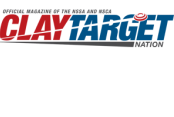Pre-Mounting
“I read your article about not dismounting between some pairs and sometimes even shooting the first target pre-mounted. I shoot most all targets using an “acquire, swing, shoot” technique. Is this wrong?”
Should you start your move from a mounted or dismounted readyposition in sporting clays? There is no right or wrong. The obvious exception is in FITASC, when you must call for the target from a dis-mounted or “low-gun” ready position. Since 1997, NSCA sporting clays rules allow a shooter to mount the shotgun prior to calling for the target, and there are a number of national champions that employ this technique. My view is that a shooter should determine the appropriate ready position based on the character of the target. If you are engaging a fast trap-like target with the machine about 25 yards in front of your shooting station, a pre-mounted ready position (or“no-draw”) might be wise. On the other hand, a different approach might be advisable for a slow, high-angle, long-window incoming target reaching its peak about 35 yards from the shooting position. For this target, I recommend starting with a longer draw, with the comb farther away from the cheek, and letting the target develop as you slowly mount the comb to the cheek.
We sometimes refer to the distance between the comb and the cheek in the ready position as “draw length.” In determining the appropriate draw length for a given target, consider the need for efficiency and speed of movement versus the need for better visibility of the target. Pre-mounting reduces visibility but increases efficiency and speed to the break point. A longer draw length increases visibility but requires more time to mount and move your gun to the break point. While there is nothing wrong with a shooter who employs pre-mounting 100 percent of the time or a low-gun technique 100 percent of the time, I recommend and advocate a more dynamic approach based on the character of a given target.
Should you dismount or stay mounted between targets of a pair? Again, it depends on the window of time you have between targets.
Don Currie is NSCA’s Chief Instructor, an Orvis Wingshooting School instructor, and Master Class competitor. To get free shooting tips and videos, sign up for his monthly newsletter. You can also see more tips from Currie at www.doncurrie.com.

